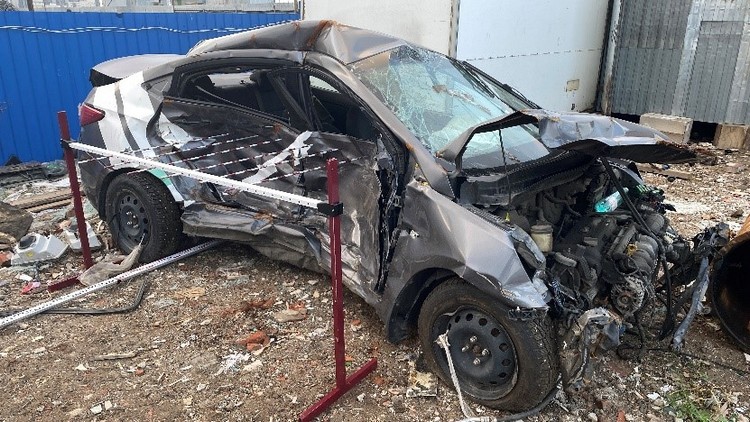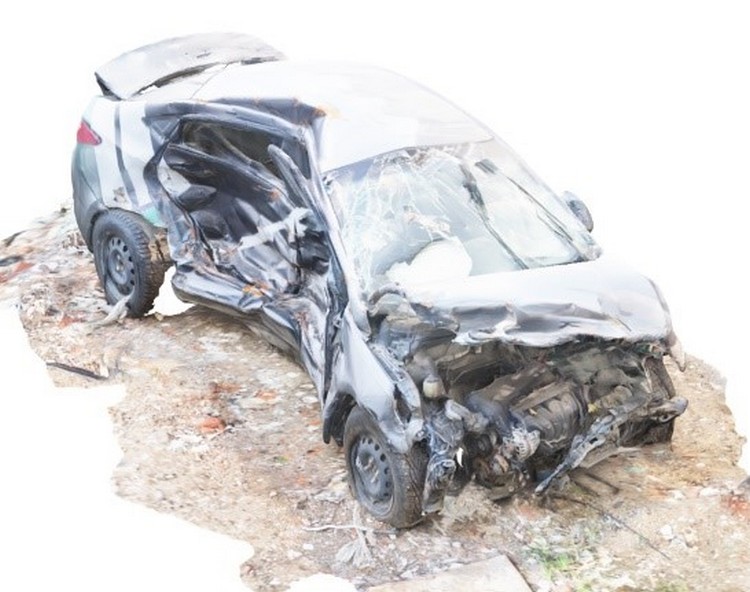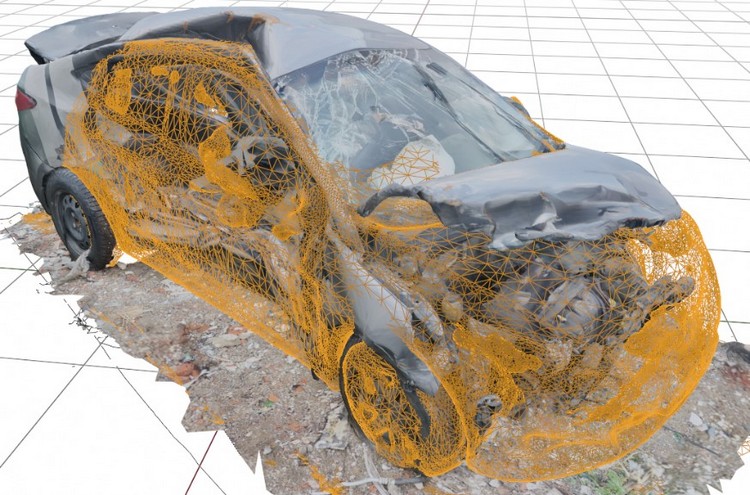Egor Golov: "My Program Allows Accurately Calculate the Speed of a Car in an Accident"
Egor Golov
Egor Golov, senior lecturer at the SPbGASU Department of transport systems, has developed a program for calculating the speed of a car involved in an accident at the time of a collision, taking into account the existing deformations. It received a certificate of state registration of the computer program No. 2021662158.
The program improves the accuracy of calculations when conducting a road transport expertise, which perfects the evidence base, allows to more thoroughly investigate the circumstances of an accident. We asked the scientist why it is necessary to determine the speed of cars at the time of a collision and how this can be done.
– How long have you been working on this problem?
– I started researching road safety issues long before I started postgraduate studies. Back in 2013, as a bachelor's student at the Department of transport systems, I discovered such a kind of activity as road transport expertise (RTE). Then I could not understand why, despite the existence of significant experience in the field of methodological support for RTE, the issue of establishing the actual speed of vehicles at the moment before the collision has not yet been resolved. It was then that a great interest arose, to some extent even excitement, which became one of the strongest incentives for me.
In June 2022, I defended my PhD thesis on the topic. In addition to the certificate of state registration of the computer program, I received a certificate of state registration of the database No. 2021622677 "Database of the stiffness characteristics of vehicles of category M-1 for road transport expertise."
– Does your research find practical application?
– The results of my dissertation work, as well as the methodology itself, algorithms, programs and formulas are in demand not only by specialists involved in the investigation of traffic accidents (inspectors, investigators, judges, lawyers, experts). They are relevant for the entire road transport complex: from car designers to specialists involved in the construction, repair and operation of roads on which these cars will drive. And I must say that these are not just high words. Already today, the solutions I have developed are actively and very successfully used in a number of large organizations, including the SPbGASU Institute for traffic safety, LLC "Business Expert", CJSC "RESO-Garantia".
Certificate of state registration of the computer program
Certificate of state registration of the database
– Who are your colleagues, co-authors, assistants? Did you have predecessors whose work you relied on?
– For more than 25 years, the strongest scientific school of the Institute for traffic safety has been actively functioning and developing at SPbGASU. It is headed by the director of the institute, head of the SPbGASU department of land transport and technological machines Sergey Arkadyevich Evtyukov, and was founded by the scientific director of the ITS, visiting professor at the department of land transport and technological machines Pavel Aleksandrovich Kravchenko. Prominent representatives of this school are such employees of the department of land transport and technological machines as professor Viktor Nikolayevich Dobromirov, associate professor Stanislav Mikhailovich Grushetsky, associate professor Yaroslav Vladimirovich Vasiliev, associate professor Ilya Sergeevich Brylev, deputy dean for research, associate professor Elena Vladimirovna Kurakina. As young, but no less talented specialists, whose work is difficult to overestimate, we can safely name the graduate student and senior lecturer at the department of transport systems Elena Valerievna Sorokina and the graduate student, assistant at the department of land transport and technological machines Alena Anatolyevna Kolomeets - the highest assessment of their work will be match the truth.
The supervisor of my dissertation is Stanislav Sergeevich Evtyukov, head of the department of transport systems, a man of the highest professional skill. Working with him is an event that greatly influenced my worldview and, in particular, my attitude to science.
Each of the ITS specialists has devoted more than one year of his work to the issues of road safety. It can be said without exaggeration that the reduction of accidents on the roads of our country is largely the result of their fundamental research. To date, the number of examinations carried out by our team on road accidents has long exceeded 50 thousand. Thanks to many years of effective work, we have accumulated colossal experience, which we intend to improve further.
– Tell us more about your research.
– Any research begins with a review and study of already accumulated experience, an analysis of possible solutions to the identified problem, after which a hypothesis is put forward and its solidity or futility is experimentally proved.
As part of my research, it was required to use finite element software systems to analyze damage to cars as a result of an accident. Subsequently, I applied my developments to the reconstruction of real accidents in St Petersburg and the Leningrad region.
Fundamental research is based on the use of complex multidisciplinary mathematical models with a high level of adequacy to real materials, structures and physical-mechanical/production processes, the use of best-in-class technologies, and the development of digital twins. But this alone does not provide an innovative breakthrough. It can be provided by the optimal and efficient integration of various best-in-class technologies in the world with the addition of original cross-industry intellectual know-how. As a result, a complex high-tech solution is formed, which is a priori the best at the moment in the world.
As part of the practical implementation of the results of scientific research, a software product for expert use was created, which allows for the analysis and modeling of the traffic situation. With the help of this computer program, calculations can be made to determine the speed of the vehicle at the time of the accident based on the damage it received as a result of an accident. For this purpose, a software component is designed to calculate the energy equivalent of deformations by their magnitude and perform inverse calculations, which make it possible to establish the characteristics of the car's movement at the moment immediately preceding the contact-trace interaction. One of the interesting features of the program is the ability to use 3D models of cars and the results of laser scanning of damaged vehicles.
– At what stage are your researches?
– A technique has been developed for assessing the speed of vehicles by their deformations, taking into account changes in the individual characteristics of car bodies depending on their class and year of manufacture. This technique includes not only formulas and algorithms, but also the tools and methods of conducting the examination. In addition, for the convenience of using the results of the study, a database of car body stiffness and specialized software have been developed – a program for calculating the speed of a car participating in an accident at the time of a collision, taking into account the resulting deformations. These developments have certificates of state registration with the Federal Service for Intellectual Property and, as I said, are used by specialists from various expert organizations.
– Share your plans.
– Today I am glad that my scientific and professional activities are connected with roads and transport in general, and it was, one might say, passion that brought me to this area. Now, after the lapse of years, I can say for sure that for me it has become something more. I can't imagine my life without science. Therefore, I will continue research aimed at improving road safety and the quality of transport services, in particular, I plan to study in more detail the system "Road User – Vehicle – Road – Environment" to build the potential for its stable and safe operation.{gallery name="голов"}
Interviewed by Tatiana Petrova
Photo: presented by Egor Golov
✔ Learn more about the department of transport systems







